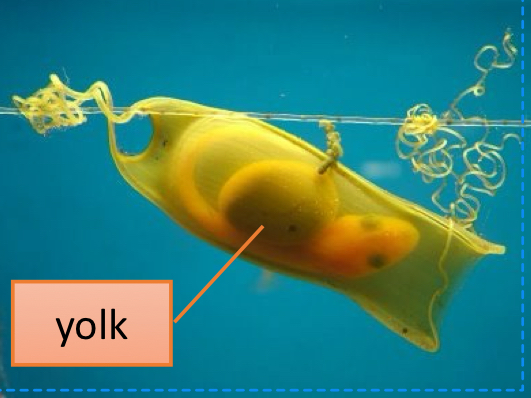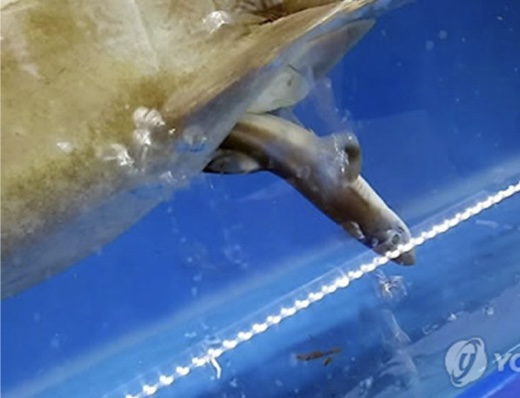8: chordate phylogeny (up to amphibians-vertebrates)
1/76
There's no tags or description
Looks like no tags are added yet.
Name | Mastery | Learn | Test | Matching | Spaced |
|---|
No study sessions yet.
77 Terms
subphylum cephalochordata are…
lancelets
what key chordate features do lancelets have?
all
how do lancelets filter feed ?
they burrow tail in and cilia draw seawater into lancelet’s mouth
where does gas exchange occur in lancelets ?
across the external body surface
what is a scientific name example of a cephalocordate?
Branchiostoma
subphylum urochordata
tunicates/ sea squirts
how do tunicates feed ?
suspension-feeds w/pharyngeal sits or endostyle
a tunicate swimming larva has what key chordate features?
all
an adult tunicate (sessile) loses what key chordate features ?
it loses the notochord, postanal tail, and dorsal nerve cord
what is significant abt cyclostomes?
they’re jawless
what animals are cyclostomes?
hagfish and lamprey
what are characteristics of cyclostomes?
they are have reduced vertebrae that are undeveloped (made of cartilage), eel-like bodies,no backbone, and no lateral fins
myxini are all what kind of marine fish?
marine scavengers w/ a cartilage skull and notochord for support and movement
what are hagfish teeth made of and what’s their fxn?
keratin that aid in feeding
hagfish are famous for?
defensive slime that comes out the slime glands across their bodies
petromyzontida are what animals
lampreys
what type of fish are lampreys?
parasites w/a notochord and cartilaginous shedding
Gnathostomes get their name from the fact that…
they have jaws
where are vertebrates w/hinged jaws derived from?
skeletal rods which support gill slits
gnathostomes usually have?
bony teeth for predation
how do gnathostomes see and smell?
w/their larger forebrain
what is the name of the early jawed fish and when did it live?
a placoderm which lived during the Denoviom period (extinct)
lateral line system
organs that form a row along each side of the body that are sensitive to vibrations in surrounding water
what does the lateral line system detect?
slight pressure waves of prey/enemy
what are the 3 gnathstome fish lineages?
cartilagenous
ray-finned
lobe-finned
chondrichthyes all have…
skeleton of cartilage
what’s animals are the most diverse group of chondrichthyes?
sharks, rays, and skates
there is a few chondrichthyes that are?
ratfishes or chimaeras
why are bone minerals lost in chondrichthyes?
to reduce density bc buoyancy is raised by liver oils and active swimming
where do some chondrichthyes live as?
active predators in marine, as filter-feeders, and some in freshwater
how do whale sharks live as?
as a filter-feeder
what are the 3 reproductive adaptations in all vertebrates ?
they’re all w/internal fertilization
oviparous
viviparous
ovoviviparous
oviparous
eggs laid and hatch outside mother; embryo develops w/in protective egg-case, fed by yolk

viviparous
young develop w/in uterus; obtain nourishment prior to birth by nutrients from mothers blood through yolk sac placenta; live birth

ovoviviparous
fertilized egg retained w/in mother;embryo fed by egg yolk; live birth

osteichthyes are…
bony including ray-fin fish and lobe-finned fish
in osteichthye skeletons remain mostly…
ossified or mineralized
what reproductive adaptation do osteichthyes use?
oviparous w/external fertilization
how are osteichthyes scales like plus their fxn?
flat and slime protect and reduce drag
what are examples of fish that are osteichthyes?
actinopterygii, actinistia, and dipnoi
what is an operculum?
a gill cover
fxn of operculum
protects and helps pump water over gills
how are osteichthyes lungs modified ?
into a swim-bladder for buoyancy
swim-bladder
air sac filled w/gas helping fish float in water
a swim bladder is a lung derivative meaning…
it arose from lungs
what do ray-finned fish have?
thin fins supported by long, flexible rays modified for maneuvering & defense, lateral line, and a swim bladder
how are almost all fish finned?
ray-finned
what’s the most diverse group of all vertebrates?
ray-finned fish
how do ray-finned fish live?
in marine or freshwater as herbivores, predators, or scavengers
what percent of ray-finned fish are compromised of the living vertebrate species ?
>56%
what animals are examples of ray-finned fish?
tuna, trout, seahorse, and perch
lobe-finned fish are significant how?
they have fleshy fins called pelvic and pectoral fins supported w/bones and muscles
what are the 3 lineages of lobe-finned fish ?
coelacanths(Actinistia), lungfishes(Dipnoi), and tetrapods
coelacanths share homologous structures with…
humans (humerus)
what fish is a lobe-finned fish?
Actinistia
what animals are limbs with digits ?
tetrapods
tetrapods have how many limbs?
4 limbs w/wrist and digits which are fingers and toes
how does the neck of tetrapods move?
independent of the body
what does the pelvic girdle fused to the backbone in tetrapods permit?
forces generated by the hind legs against the ground to be transferred to the rest of the body
how do tetrapods breathe as adults ?
w/lungs having an absence of gills except in some aquatic species
why do tetrapods have ears?
to detect airborne sounds
what are ancestors of tetrapods ?
lobe-finned, lung-breathing fish w/mant tetrapod features
what is the name of fossil fish w/tetrapod features ?
Tiktaalik that could shuffle in pools and on land
what are tetrapod characteristics?
neck
ribs
fin skeleton
flat skull
eyes on top of skull
what is the basal extant tetrapod group?
amphibia
how does gas exchange occur in amphibians ?
their thin moist skin loses H2O easily and they exchange w/air across moist skin and lungs gulps air like fish to fill lungs
how do amphibians use positive pressure breathing?
they gulp air
force it down their throat
and
what reproductive adaption do amphibians use?
oviparous w/fish-like eggs that have no shells (reproduction is closely tied to fresh water since they’ll dehydrate quickly in air)
a tadpole becomes a frog by…
metamorphosis into a carnivorous adult
frogs and toads have what type of fertilization ?
external
marsupial frogs brood eggs meaning…
direct-developing larvae within a fully enclosed pouch, from which (b) froglets emerge; serves as a protected environment for embryonic development
salamanders have what body parts as an adult
4 legs and a tail
frogs have what body parts as adults ?
4 legs and no tail
caecilians have what body parts as an adult?
no legs they’re snake-like
what are the most numerous amphibians ?
frogs
salamanders are what type of terrestrial amphibians ?
moist
caecilians are what type of terrestrial amphibian?
moist burrowing